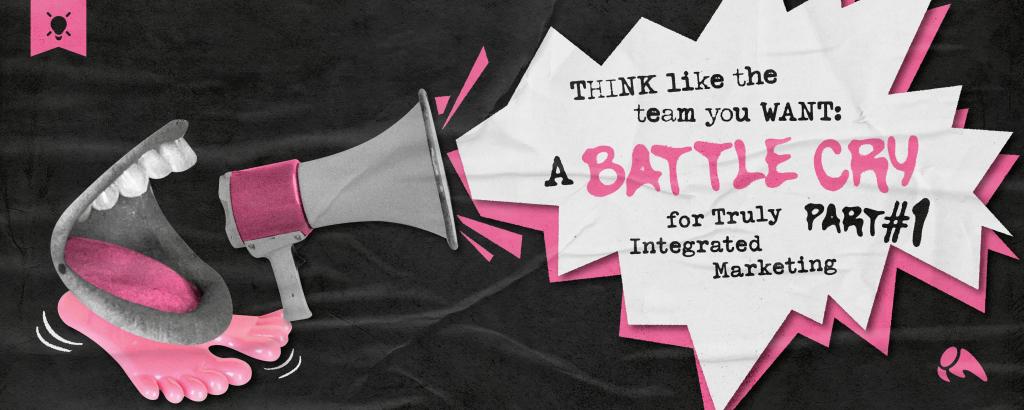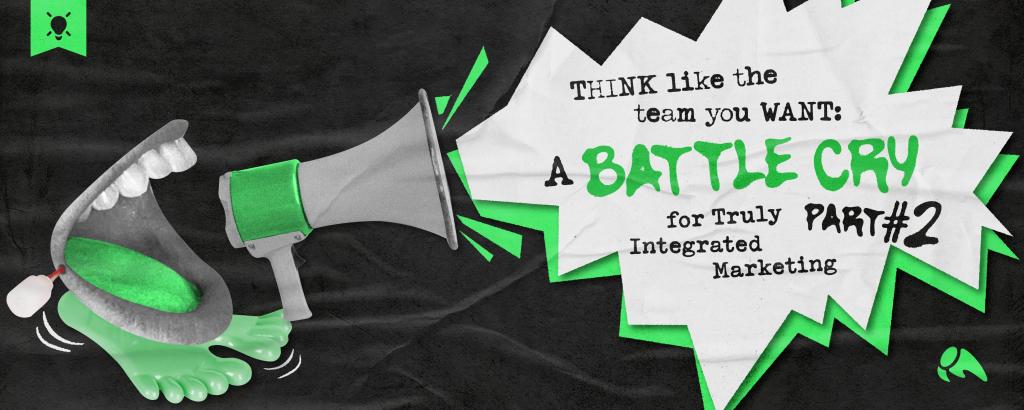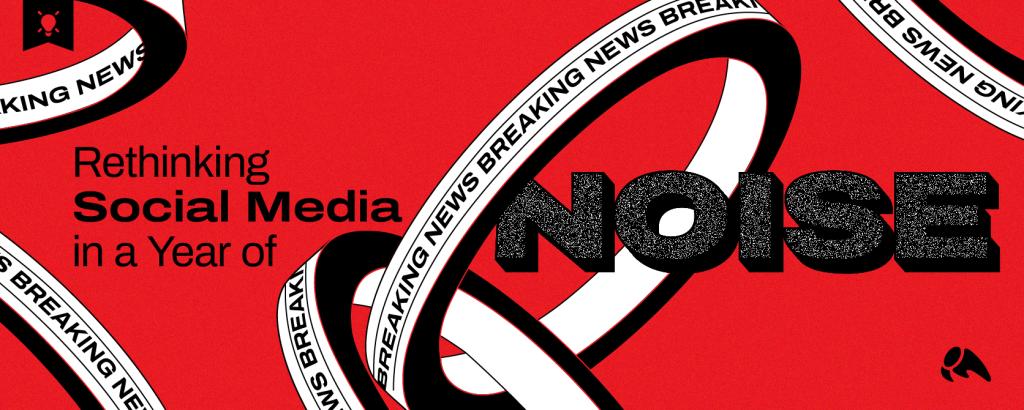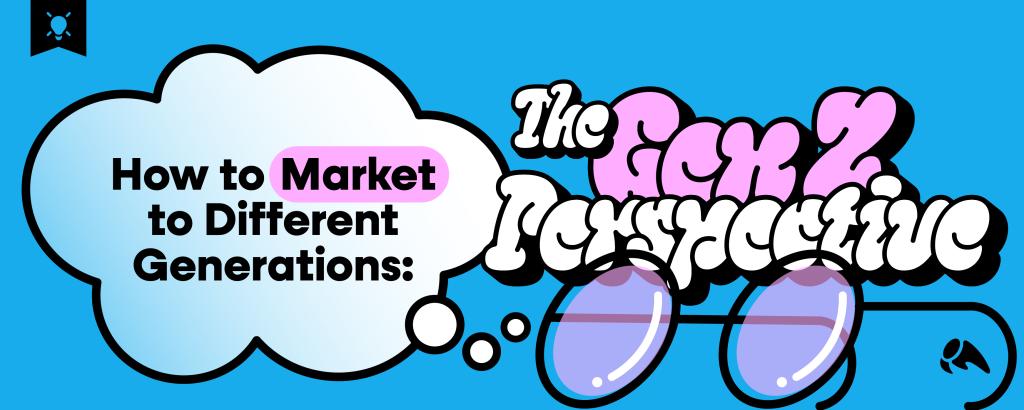
Hi, my people—thank you for being here. Let’s get into what is on my mind RIGHT NOW:
The agency world is flipping its script — fast. And here we are, halfway through 2025, watching it all unfold (or unravel, depending on how you’re feeling…).
Yes, I called this post a battle cry. #HellyeahIdid. And no, it’s not chest-thumping intimidation. That’s #ew. This one’s about marketing. Integrated thinking. About building braver. Smarter. Like a team—now, and as we continue forward.
 Google defines a battle cry as “a phrase shouted by soldiers going into battle to express solidarity or a slogan promoting a cause.” Solidarity? Sure. Cause? Absolutely. Intimidation? Ick. Marketing’s messy enough without that vibe.
Google defines a battle cry as “a phrase shouted by soldiers going into battle to express solidarity or a slogan promoting a cause.” Solidarity? Sure. Cause? Absolutely. Intimidation? Ick. Marketing’s messy enough without that vibe.
Here is looking at *YOU* product managers, brand managers, marketing directors, team leaders, web managers, or whatever title you hold that means *YOU*, captain, hold the ship together single-handedly.
Whew, buddy. Do your bosses know how hard THAT is?
Stick with me, because I’m breaking down what integration in marketing really looks like, no fluff, no buzzwords.
What Integrated Marketing Looks Like in the Real World
If you know me—or have read one of my rants—you know I have zero patience for cookie-cutter anything. Especially not in marketing. Even at Overit—a gloriously “extra” agency—I gravitate toward the unexpected. The experimental. The “what if we actually tried this?” kind of work.
Don’t give me marketing that says it’s integrated.
 Give me marketing that is integrated—built from the jump to connect, align, and actually move people.
Give me marketing that is integrated—built from the jump to connect, align, and actually move people.
True integration isn’t a trend or a box to check. It’s a way of working where strategy, creativity, tech, humanity, and community aren’t separate projects—they’re threads woven into the same fabric. Collaboration isn’t a slide deck phrase; it’s how you operate. Data isn’t just reports; it’s a compass pointing toward a deeper connection.
If you’re still asking ‘Who owns what?’ or debating ‘In-house vs. agency?’—you’re missing the bigger opportunity.
Integrated means done together. Like a finely tuned engine, all parts—strategy, creative, development, media, PR—move in sync, whether under one roof or across time zones.
Here’s what it looks like in the real world:
- Your web developers are talking to PR before a site launch.
- Creative sketching concepts, knowing the media plan inside and out.
- Your in-house team syncing with agencies so closely, it feels like everyone’s wearing the same team merch.
- Everyone is pivoting quickly because there’s a real, urgent need.
And yeah — it takes work. A lot of it. But integration isn’t magic. It’s trust. Communication. Teamwork. And coming from a non-sports-cultured human, that says a lot.
How to Think and Build Integrated Teams (Without Losing Your Mind)
If you’re a brand leader, team leader, or marketing leader, here’s your mindset shift:
Stop treating in-house + agency as an overlap, or worse, a turf war. That hybrid model? That’s your superpower—when it’s built to work together. Share information across vendors and partners. Integrated teams don’t hoard information. They share it. Freely. That means:
- Your hosting company should talk to your dev team.
- Your social agency should know what PR is pushing.
- Your CRM vendor should be looped into your website relaunch.
Ditch the question “Who owns this?” and share ownership instead. And please, bury the ick phrase “Who has the throat to choke on this project”?
Instead, let’s ask better questions:
- “How does this piece connect to the whole?”
- “Is this idea aligned with everything else we’re doing—or floating on its own?”
- “Can we make this smarter, tighter, more effective—without adding more budget?”
Don’t let your partners work in silos. Expect them to connect the dots and call it out when they don’t. Avoid the trap where the work gets technically “done,” but nothing truly works together. Ask for the glue: the dashboards, the shared tools, the systems that make the pieces function as one, not just sit side by side.
When integration is working, it doesn’t feel like extra work. It feels like extra greatness. Here’s what happens when integration clicks:
- Teams want to talk to each other.
- Wins are celebrated across teams, not hoarded by departments.
- We build together, not just “what’s our piece of this?”
- Communication is open.
- Role definitions feel flexible, not fixed.
- Processes encourage cross-pollination, not red tape.
- Collaboration isn’t ‘extra work.’ It’s how the work works.
- Roles flex, ideas flow, and no one hoards the win.
Integration doesn’t mean doing more. It means doing it smarter—and doing it together. It means fewer dropped balls, less “wait, who was supposed to handle that?” moments, and faster pivots when plans inevitably change (because they always do). It means a brand designed to work together, because it has. And most importantly, you know who to call, for what.
Integration in Action: The Proof Is in the Data
Look, integration isn’t just about teams getting along (though that’s huge). It’s about real results—and the proof? Data. Yes, I said data. I’ll admit—I don’t love it. But at Overit, plenty of us live in it. We’ve got dashboards pulling from everywhere—web, social, PR, ads. It hurts my brain, but Ryan (Our Director of Digital) makes it beautiful. Custom views that actually tell a story: not just clicks, but connections.
And that’s the point. Data isn’t there to drown us. It’s there to help us show up at the right moment, with the right message, in a way that feels real.
Brand and performance? We don’t pick one. Integrated teams deliver both—because that’s what people notice, remember, and care about.
Hear My Battle Cry!
Imagine me riding my unicorn in front of a throng of marketers, shouting the following:
“Yes. Here we are! Integrated isn’t just how in-house teams or agencies work. It’s how brave teams win.
- If you’re over in-house vs. out-of-house.
- If you see through silos pretending they’re connected.
- If you want one mission. One engine. All the parts firing together so your brand doesn’t just show up — it breaks through.
- If you’re tired of duct-taped campaigns and teams that don’t talk to each other?
- If you want marketing that actually matters—not just filler for your feeds…
- If you’re ready to build what’s next, not just what’s safe?
Then this is the moment to stop playing small. This is the moment to get integrated, get braver, and GO.





